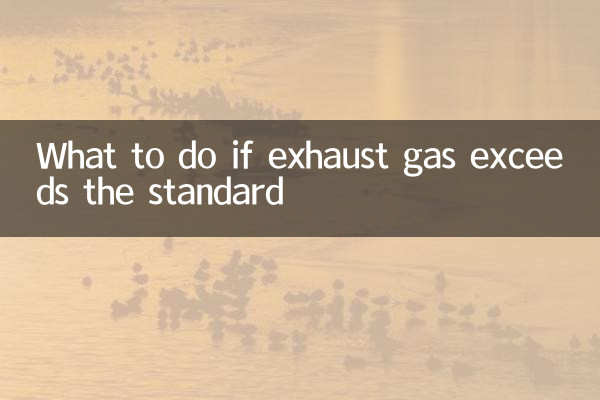What should I do if the exhaust CO exceeds the standard? ——Cause analysis and solutions
In recent years, with the increase in car ownership, exhaust emissions issues have attracted increasing attention. Among them, carbon monoxide (CO) exceeding the standard is one of the common exhaust pollution problems. This article will combine popular topics and hot contents on the Internet for the past 10 days to analyze the reasons for excessive exhaust gas CO and provide practical solutions.
1. Reasons for excessive exhaust CO

Excessive exhaust CO is usually related to insufficient combustion of vehicles. The following are several common reasons:
| Cause classification | Specific performance | The degree of impact |
|---|---|---|
| Fuel system issues | Blocked fuel injectors, poor fuel quality | high |
| Ignition system failure | Spark plug aging, ignition coil damage | high |
| Insufficient air supply | Air filter is blocked, air leakage in the air intake system | middle |
| Three-way catalyst failure | Catalyst clogging or aging | high |
| Carbon deposits in the engine | Long-term low-speed driving or poor fuel caused | middle |
2. How to detect whether the exhaust gas CO exceeds the standard?
Exhaust CO exceeding the standard usually requires professional equipment inspection. The following are common detection methods and standards:
| Detection method | CO standard value (gasoline vehicle) | Hazards beyond the standard |
|---|---|---|
| Idle method | ≤0.5% | Inadequate combustion, increased fuel consumption |
| Double idle method | High idle speed ≤0.3% | Pollution of the environment and damages health |
| Simple working condition method | ≤1.0% | May lead to failure to pass the annual inspection |
3. Solutions for excessive exhaust CO
For different reasons, the following measures can be taken:
1.Regular maintenance of vehicles: Change the oil and filter every 5,000 kilometers, and check the spark plug and ignition system every 20,000 kilometers.
2.Use high-quality fuel oil: Choose a regular gas station to avoid using inferior fuel to cause carbon accumulation in the engine.
3.Clean the fuel system: The fuel injection nozzle and combustion chamber can be cleaned regularly using fuel additives.
4.Check the three-way catalyst: If the vehicle's mileage exceeds 80,000 kilometers, it is recommended to check whether the three-way catalyst fails.
5.Improve driving habits: Avoid long-term low-speed driving. Occasionally running on high speeds can help remove carbon deposits.
4. Recent hot topics
According to the hot spot monitoring of the entire network for the past 10 days, the following are topics of high concern related to exhaust emissions:
| topic | Popularity index | Main discussion points |
|---|---|---|
| Implementation of National VI emission standards | ★★★★★ | New standards require vehicle emissions |
| Popularization of new energy vehicles | ★★★★☆ | The role of electric vehicles in reducing exhaust emissions |
| New exhaust gas testing regulations | ★★★☆☆ | New testing methods implemented in some areas |
| Fuel additive effect | ★★★☆☆ | Real effect evaluation of market products |
5. Professional advice
If your vehicle is in the following situation, it is recommended to undergo professional maintenance immediately:
1. Black smoke comes out of exhaust pipe
2. The engine power has dropped significantly
3. Abnormal fuel consumption increase
4. Failure to test exhaust during annual inspection
Excessive exhaust CO not only affects vehicle performance, but also causes harm to the environment and human health. This problem can be effectively prevented and solved through regular maintenance, use of high-quality fuel and improving driving habits. If the problem is serious, it is recommended to go to a professional maintenance point for a comprehensive inspection in a timely manner.
I hope this article can help you better understand and solve the problem of excessive exhaust gas CO, so that we can contribute to improving air quality together.

check the details

check the details